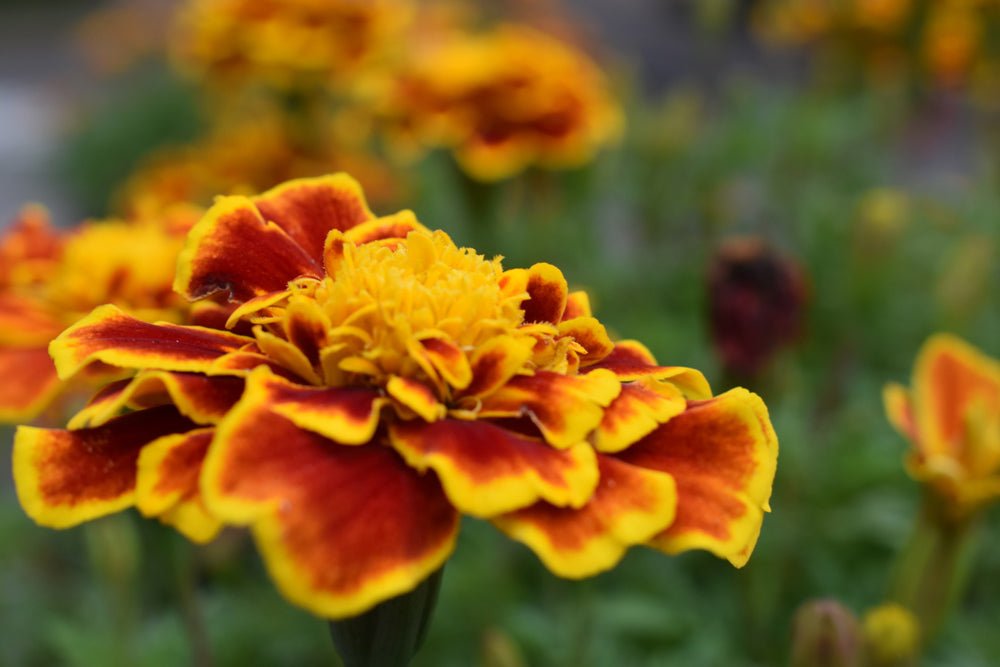In order to effectively repel bugs from your tomato plants, it is crucial to strategically choose plants that have natural insect-repelling properties. By selecting compatible companion plants, you can create a harmonious garden ecosystem that discourages pests, reduces the need for harmful pesticides, and promotes the overall health and productivity of your tomato plants. This article explores various plant species that can be planted alongside tomatoes to ward off pests and ensure a bountiful harvest. From marigolds to basil, discover the power of companion planting in deterring bugs from infesting your precious tomato crop.
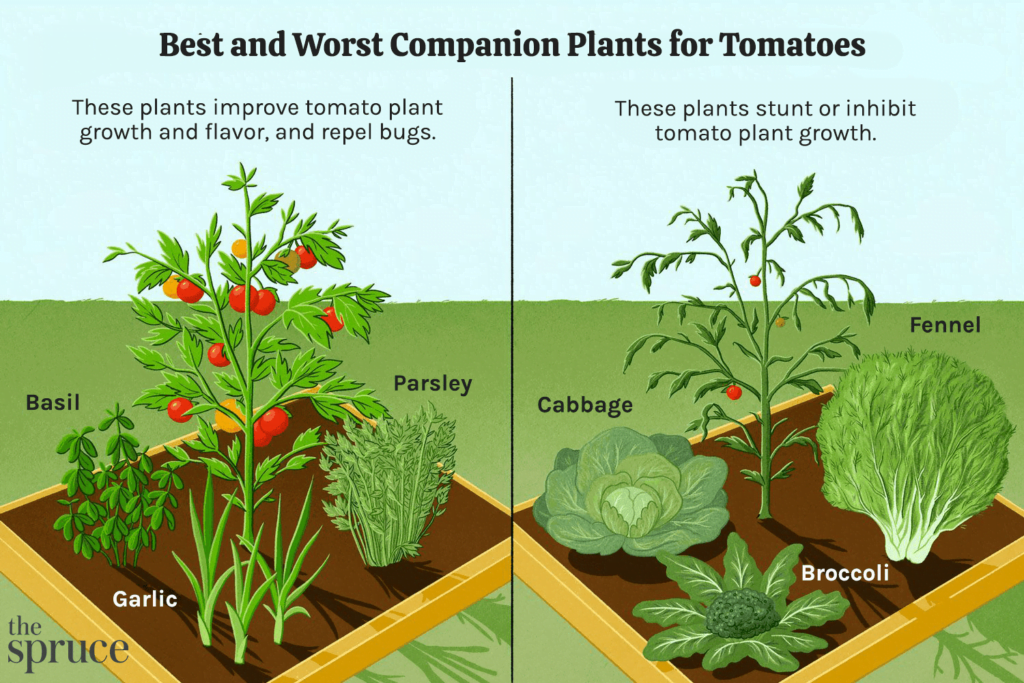
Companion Plants for Tomatoes
Why companion planting is important
Companion planting refers to the practice of planting different species of plants together to enhance each other’s growth and repel pests. It is an ancient agricultural technique that has been used for centuries to promote healthier crops and maximize space in gardens. Companion planting offers several benefits, such as improving soil fertility, attracting beneficial insects, and deterring pests and diseases. When it comes to tomatoes, choosing the right companion plants can be pivotal in ensuring a successful harvest.
Benefits of planting companion plants with tomatoes
Planting companion plants alongside tomatoes can provide numerous benefits. Firstly, certain companion plants act as natural pest repellents, helping to deter pests and reduce the risk of infestations in tomato plants. This can significantly minimize the need for chemical insecticides and promote organic and sustainable gardening practices.
Secondly, companion plants can attract helpful insects like pollinators and predatory insects that feed on common tomato pests. These beneficial insects contribute to the overall health and productivity of the tomato plants by pollinating flowers and preying on harmful bugs, thus reducing potential damage and ensuring higher yields.
Moreover, some companion plants enhance the flavor of tomatoes or improve their overall health by mitigating the growth of fungal diseases. Additionally, certain companion plants can provide shade or serve as a natural trellis for the sprawling tomato vines, promoting better air circulation and preventing excessive moisture accumulation, which can lead to diseases.
By strategically selecting companion plants, gardeners can create a well-balanced ecosystem that promotes the growth and resilience of tomatoes, enhances biodiversity, and reduces the reliance on chemical interventions.
Herbs
Basil
Basil is considered a classic companion plant for tomatoes due to its aromatic properties. The scent of basil deters pests such as aphids, mosquitoes, and tomato hornworms. Planting basil in close proximity to tomatoes can significantly reduce the risk of these pests attacking the tomato plants. Furthermore, basil has been shown to improve the flavor and growth of tomatoes when planted together.
Rosemary
Rosemary is a fragrant herb that can also serve as a fantastic companion plant for tomatoes. Its strong scent repels various insects, including aphids, bean beetles, and cabbage loopers. Intercropping rosemary with tomatoes can benefit both plants by discouraging harmful pests and enhancing the flavor and vigor of the tomatoes.
Oregano
Oregano is well-known for its culinary uses, but it can also be a beneficial companion plant for tomatoes. Oregano releases chemicals that repel pests like cabbage worms, carrot flies, and aphids. Planting oregano near tomatoes can help protect them from these pests while adding a delightful flavor to the tomatoes themselves.
Thyme
Thyme is another herb that can be an excellent companion for tomatoes. Its strong fragrance deters many pests, including cabbage worms, whiteflies, and tomato hornworms. By planting thyme alongside tomatoes, gardeners can create a more pest-resistant environment and potentially enhance the taste of the tomatoes.
Mint
Mint is known for its invasive nature, but when grown in containers or isolated areas, it can be a valuable companion plant for tomatoes. Mint repels a wide range of pests, including ants, aphids, flea beetles, and whiteflies. However, caution should be exercised when planting mint near tomatoes to prevent its aggressive growth from overshadowing and competing with the tomatoes for nutrients and space.
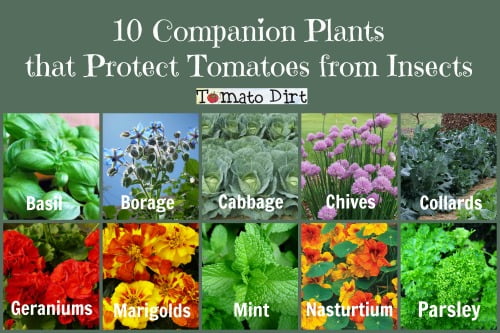
Flowering Plants
Marigolds
Marigolds are highly regarded as a versatile companion plant in vegetable gardens, especially for tomatoes. The strong scent emitted by marigolds repels nematodes, aphids, and whiteflies, which are common pests that can damage tomato plants. Additionally, marigolds attract beneficial insects such as ladybugs and hoverflies, which actively prey on harmful insects.
Nasturtiums
Nasturtiums are bright, vibrant flowers that not only add beauty to the garden but also serve as effective companions for tomatoes. Nasturtiums act as a trap crop, attracting pests like aphids and spider mites away from the tomato plants. By luring these pests away, nasturtiums help to safeguard the tomatoes and minimize potential damage.
Petunias
Petunias are popular flowers known for their vibrant colors and ornamental value. Beyond their beauty, petunias can benefit tomato plants by attracting pollinators and deterring tomato hornworms. The sweet aroma of petunias also repels aphids and other pests, keeping tomato plants healthier and reducing the need for chemical interventions.
Calendula
Calendula, also known as pot marigold, is an attractive flowering plant that serves as a reliable companion for tomatoes. Its bright yellow and orange flowers not only add visual appeal to the garden but also attract beneficial pollinators. Calendula repels aphids, whiteflies, and tomato hornworms, helping to protect tomato plants from infestations and disease.
Root Vegetables
Onions
Onions are well-suited as companion plants for tomatoes due to their pungent odor. The strong scent of onions acts as a natural deterrent for many pests, including aphids, spider mites, and snails. By interplanting onions with tomatoes, gardeners can significantly reduce the risk of pest infestations and enhance the overall health of the tomato plants.
Carrots
Carrots can be effective companion plants for tomatoes, particularly when grown in the early stages of tomato growth. Carrots promote soil health by adding organic matter and improving drainage, which can benefit tomato plants. Moreover, the dense foliage of carrots acts as a natural weed suppressant, reducing competition for nutrients and space.
Garlic
Garlic is renowned for its potent aroma and culinary uses, but it also possesses natural pesticide properties. Planting garlic near tomatoes helps deter pests like aphids, spider mites, and beetles. Moreover, garlic is known to repel rabbits and moles, providing protection to the tomato plants.
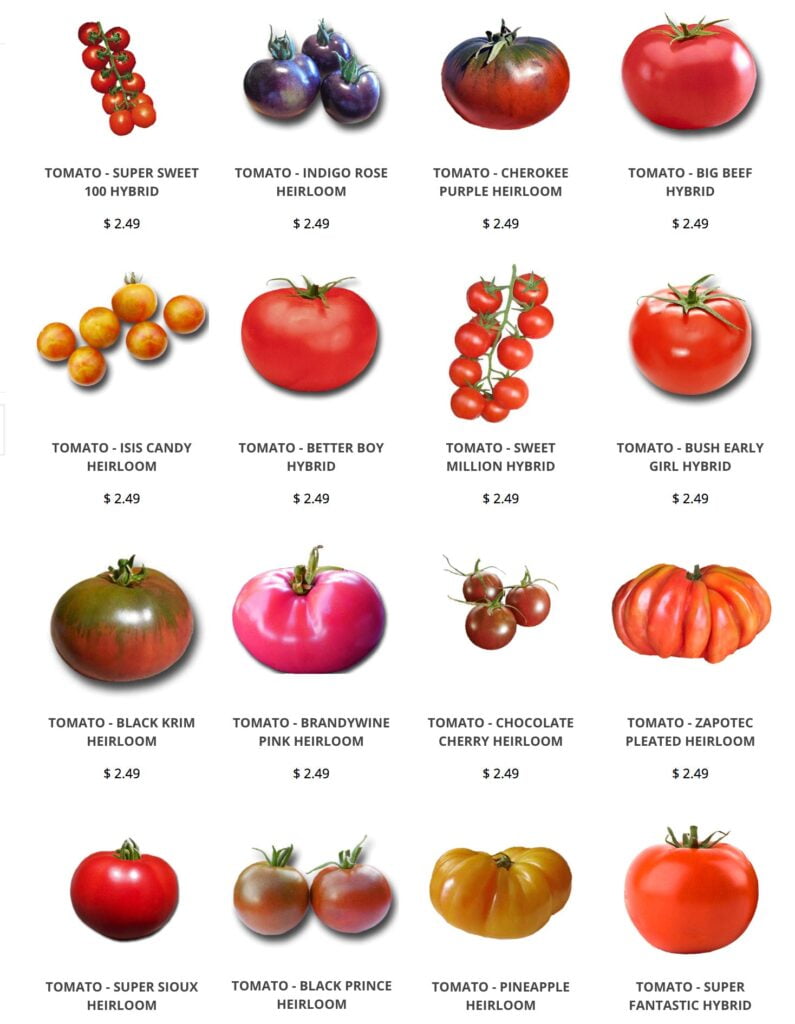
Other Vegetables
Peppers
Peppers and tomatoes are from the same botanical family, making them compatible companion plants. Planting peppers alongside tomatoes can help deter pests that commonly afflict both plants, such as aphids and hornworms. Additionally, these plants have similar cultural requirements, making it easier to meet their needs when grown together.
Lettuce
Lettuce can serve as a beneficial companion plant for tomatoes, especially if interplanted in the shade cast by the tomato plants. The lettuce’s broad leaves help to provide shade and reduce the risk of sunscald on tomatoes. Additionally, lettuce can act as a living mulch, suppressing weeds and conserving soil moisture for both plants.
Cucumbers
Cucumbers are known to be compatible companions for tomatoes, particularly when it comes to space utilization. Growing cucumbers vertically next to tomato plants not only maximizes garden space but also creates natural trellises for the sprawling tomato vines. Additionally, cucumbers repel pests like aphids and beetles, benefiting the nearby tomato plants.
Beneficial Insects
Ladybugs
Ladybugs, also known as lady beetles, are highly regarded beneficial insects in gardens. These small, colorful beetles are voracious predators of many common tomato pests, including aphids and mites. By attracting ladybugs through companion planting or providing suitable habitats, gardeners can significantly reduce pest populations and protect their tomato crops.
Praying mantises
Praying mantises are fascinating insects known for their predatory behavior. These slender creatures are skilled hunters that prey on a variety of pests, such as caterpillars, flies, and aphids. By ensuring a suitable environment for praying mantises and integrating companion plants that attract these beneficial insects, gardeners can promote a natural balance and reduce pest-related issues in tomato plants.
Braconid wasps
Braconid wasps are tiny, non-stinging wasps that play a crucial role in natural pest control. These wasps lay their eggs inside pests such as tomato hornworms and caterpillars. As the eggs hatch, the larvae feed on the pests, effectively eliminating them. By planting companion plants that attract braconid wasps, gardeners can encourage this natural method of pest control and safeguard their tomato plants.
Hoverflies
Hoverflies, also known as flower flies, are excellent pollinators and natural predators of aphids. These beneficial insects are attracted to nectar-rich flowers, making them effective pollinators for tomato plants. Moreover, hoverfly larvae are voracious aphid predators, reducing the likelihood of aphid infestations in the garden. By planting companion flowers that attract hoverflies, gardeners can ensure improved pollination and pest control for their tomatoes.
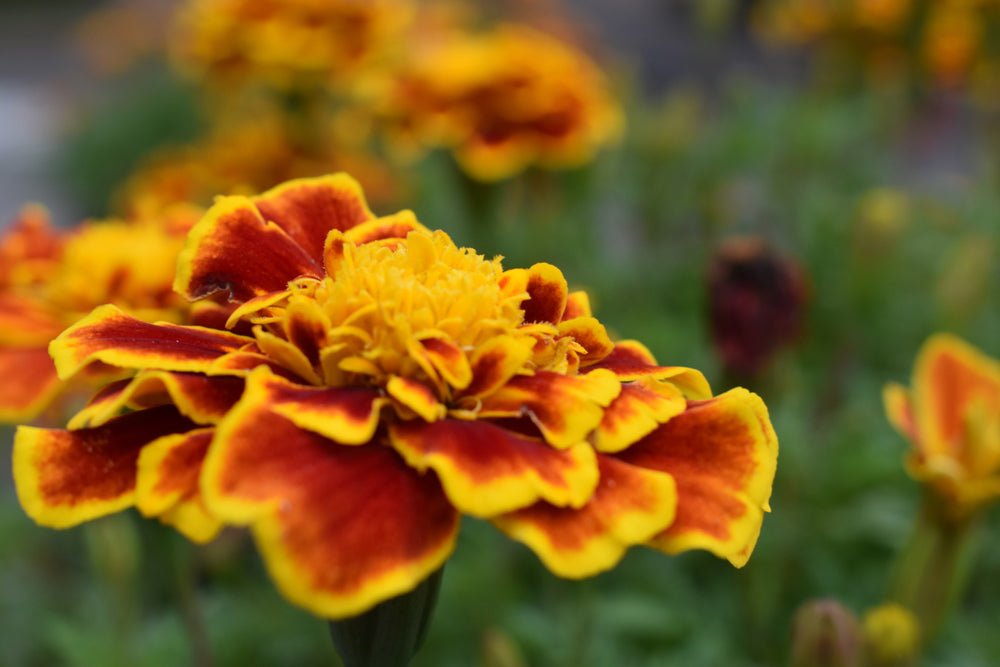
Repellent Plants
Catnip
Catnip, a member of the mint family, is well-known for attracting cats but is also a potent repellent plant for many pests. Its strong aroma deters insects such as aphids, flea beetles, and ants. By planting catnip near tomatoes, gardeners can create a natural barrier against pests and enhance the overall health of the tomato plants.
Chrysanthemums
Chrysanthemums contain a natural insecticidal compound called pyrethrum, which repels numerous pests when planted nearby. Their strong scent deters aphids, spider mites, and even nematodes that can damage tomato plants. By incorporating chrysanthemums into the garden, gardeners can add beauty and protection to their tomato crops.
Lavender
Lavender is renowned for its beautiful fragrance and soothing properties, but it is also a valuable companion plant for tomatoes. The scent of lavender repels fleas, moths, and many other pests that commonly affect tomato plants. Additionally, lavender’s long-lasting blooms attract beneficial pollinators and provide a visually appealing addition to the garden.
Trap Crops
Parsley
Parsley is not only a popular herb for culinary use but also an effective trap crop for certain pests. The strong scent of parsley attracts swallowtail butterflies, which lay their eggs on its leaves instead of damaging the tomato plants. By strategically planting parsley near tomato plants, gardeners can divert pests and minimize potential damage to their precious tomatoes.
Dill
Dill is a versatile herb that serves as a trap crop for tomato hornworms. By planting dill near tomato plants, gardeners can lure these destructive pests away from the tomatoes. Additionally, dill attracts beneficial insects like hoverflies and parasitic wasps, which prey on aphids and other harmful pests, further protecting the tomato plants.
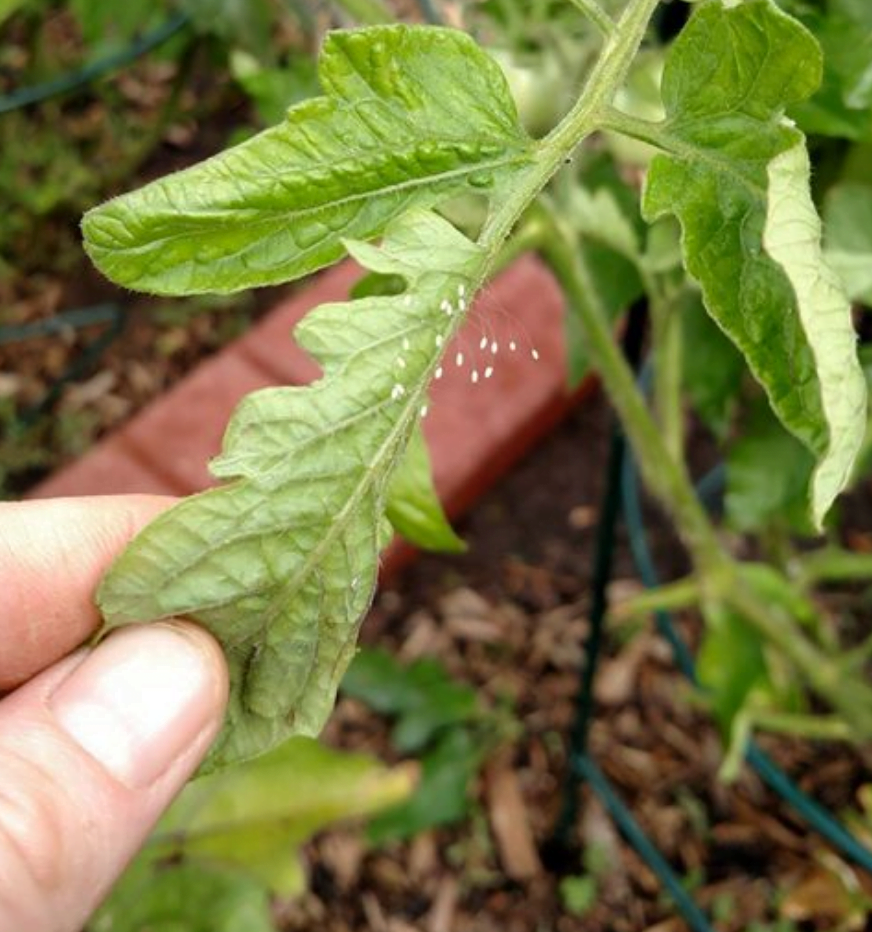
Interplanting Strategies
Interplant basil and tomatoes
Interplanting basil and tomatoes is a classic companion planting strategy. The aromatic compounds released by basil deter pests like aphids, mosquitoes, and tomato hornworms, while enhancing the flavor of the tomatoes. By alternating rows or interspersing basil plants among the tomato plants, gardeners can create a harmonious and mutually beneficial relationship between the two crops.
Interplant marigolds and tomatoes
Interplanting marigolds with tomatoes has proven to be an effective strategy for pest control and disease prevention. Marigolds emit a strong scent that repels nematodes, aphids, and whiteflies, while attracting beneficial insects like ladybugs and hoverflies. By planting marigolds as borders or companion plants between tomato rows, gardeners can create a natural barrier against pests and promote healthier tomato plants.
Interplant onions and tomatoes
Intercropping onions with tomatoes is a widely practiced companion planting method. The pungent scent of onions deters pests such as aphids, spider mites, and snails, which often pose a threat to tomato plants. By planting onions between tomato rows or as a border, gardeners can effectively reduce the risk of pest infestations and improve the overall health of the tomatoes.
Companion Plants to Avoid
Corn
Corn is generally not recommended as a companion plant for tomatoes. Corn has specific nutrient requirements and a dense root system that can compete with tomatoes for resources, leading to reduced growth and productivity. Furthermore, corn attracts pests like corn earworms, which can also attack tomatoes. It is best to keep a distance between corn and tomatoes to avoid potential negative impacts.
Fennel
Fennel is known for its strong licorice-like aroma, which can have adverse effects on nearby plants, including tomatoes. Fennel releases certain compounds that may inhibit the growth and development of neighboring plants, potentially affecting the overall health and yield of tomatoes. To prevent any interference, it is advisable to avoid planting fennel in close proximity to tomatoes.
Potatoes
Potatoes are not ideal companion plants for tomatoes due to their susceptibility to similar fungal diseases, including late blight. Growing potatoes near tomatoes increases the risk of disease transmission and can result in significant damage to both crops. To minimize the spread of diseases, it is best to keep a considerable distance between potato and tomato plants in the garden.
In conclusion, companion planting offers numerous advantages for tomato plants in terms of pest control, disease prevention, and overall plant health. By selecting the right companion plants, gardeners can harness the power of natural interactions to create a thriving ecosystem within their gardens. Whether it is through the use of herbs, flowering plants, root vegetables, beneficial insects, repellent plants, trap crops, or interplanting strategies, the choices are plentiful for enhancing tomato growth and productivity. However, it is crucial to be mindful of the companion plants to avoid, such as corn, fennel, and potatoes, to maintain the optimal conditions for tomatoes and ensure a successful harvest. By incorporating companion plants into tomato gardens, gardeners can cultivate a diverse and harmonious environment, promoting sustainability, biodiversity, and the satisfaction of growing healthy, flavorful tomatoes.
